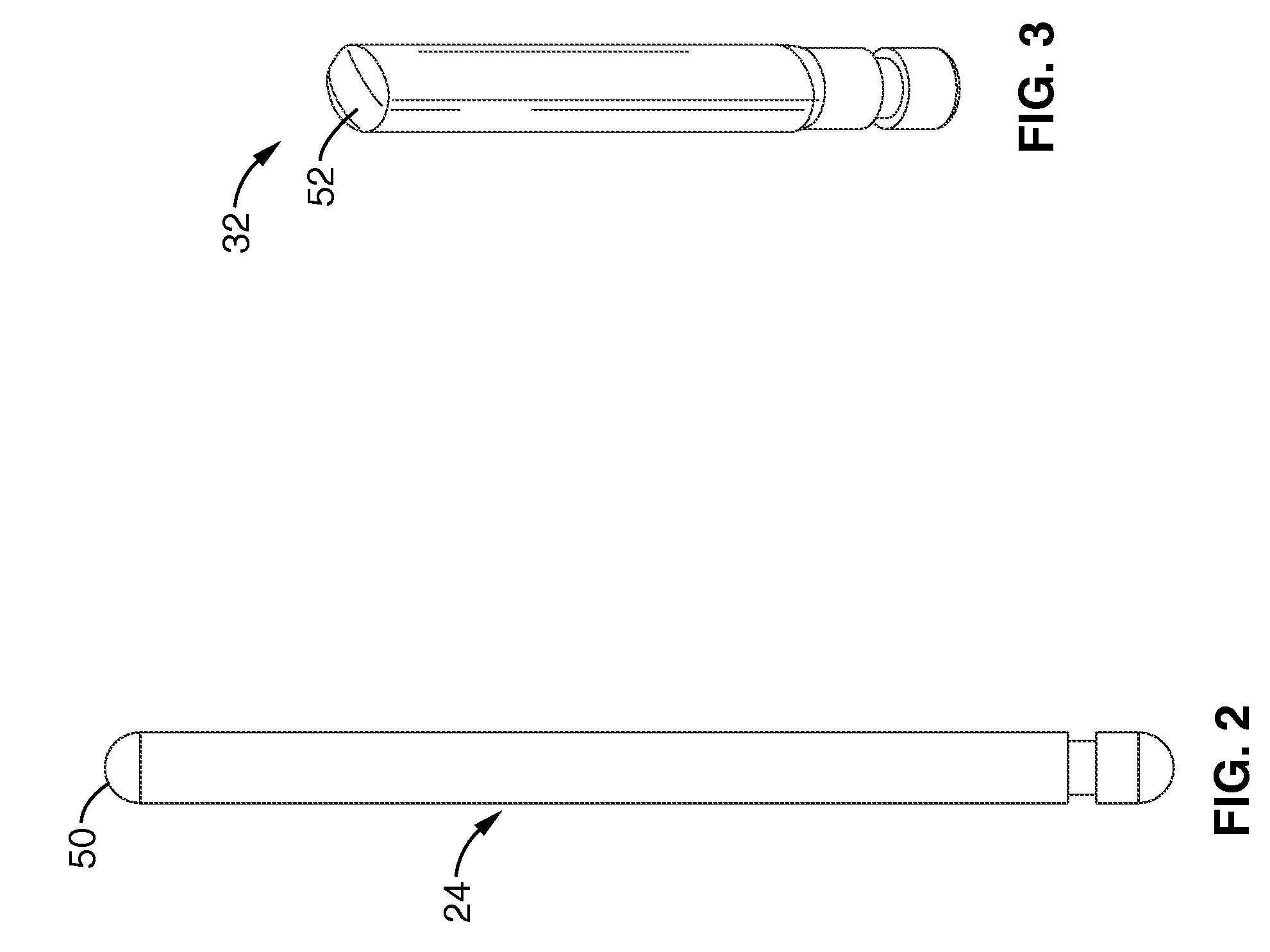Reduced friction piano action pins
a technology of action pins and pianos, applied in the direction of strings, instruments, etc., can solve the problems of direct effort that the pianist must expend, the friction between the components of the action of the piano can be unpredictable and difficult to control, and the difficulty in controlling the sound made by the piano, so as to reduce the friction coefficient, reduce the effort, and reduce the effect of friction and corrosion resistan
- Summary
- Abstract
- Description
- Claims
- Application Information
AI Technical Summary
Benefits of technology
Problems solved by technology
Method used
Image
Examples
Embodiment Construction
[0031]Referring more specifically to the drawings, for illustrative purposes the present invention is embodied in the apparatus generally shown in FIG. 1 through FIG. 3. It will be appreciated that the apparatus may vary as to configuration and as to details of the parts without departing from the basic concepts as disclosed herein.
[0032]Several different piano action designs have been developed in the art over the years, each a variation on a theme. The purpose of the piano action is to accurately translate the finger movements of the pianist into a musical tone from the strings and soundboard. Changes in timing, speed and force of the keystroke should result in a corresponding change in the volume, intensity and duration of the tones produced by the instrument.
[0033]The typical grand piano action has a keyboard with eighty-eight keys. A mechanism is connected to each key to cause a hammer to strike a predetermined set of strings. In the conventional action mechanism, the force app...
PUM
| Property | Measurement | Unit |
|---|---|---|
| lengths | aaaaa | aaaaa |
| lengths | aaaaa | aaaaa |
| diameter | aaaaa | aaaaa |
Abstract
Description
Claims
Application Information
 Login to View More
Login to View More - R&D
- Intellectual Property
- Life Sciences
- Materials
- Tech Scout
- Unparalleled Data Quality
- Higher Quality Content
- 60% Fewer Hallucinations
Browse by: Latest US Patents, China's latest patents, Technical Efficacy Thesaurus, Application Domain, Technology Topic, Popular Technical Reports.
© 2025 PatSnap. All rights reserved.Legal|Privacy policy|Modern Slavery Act Transparency Statement|Sitemap|About US| Contact US: help@patsnap.com



